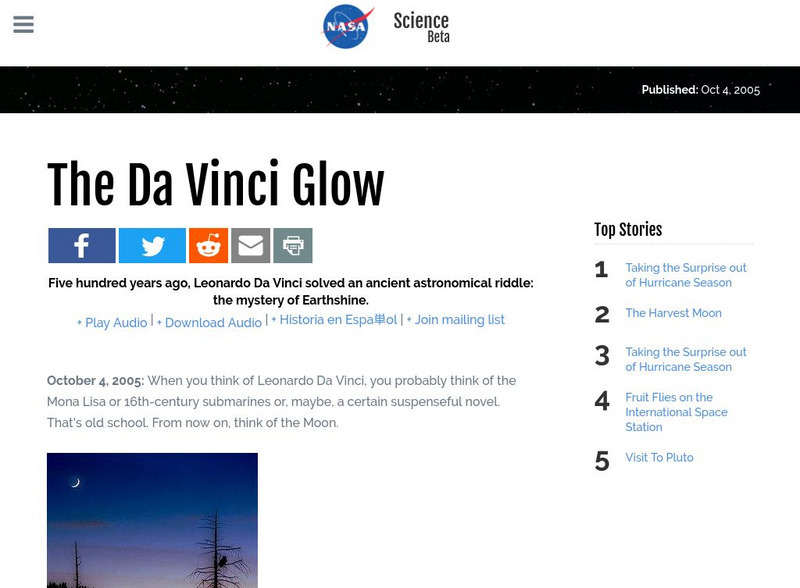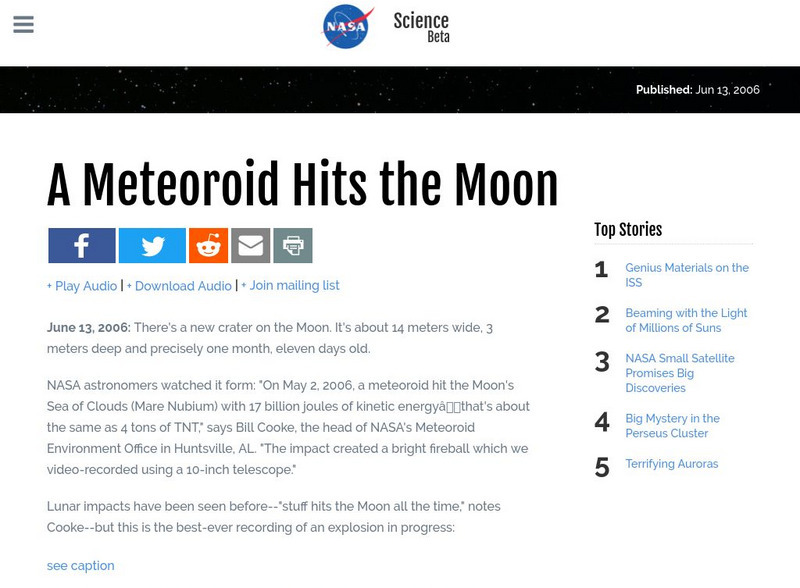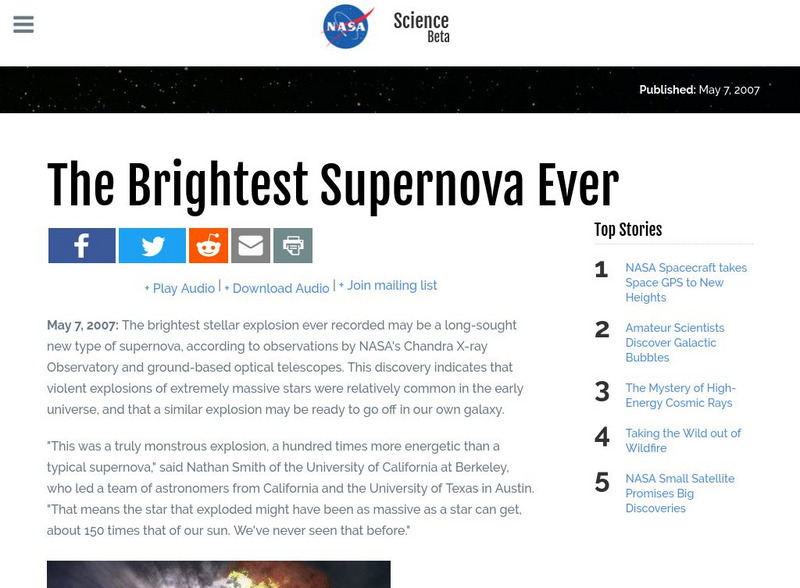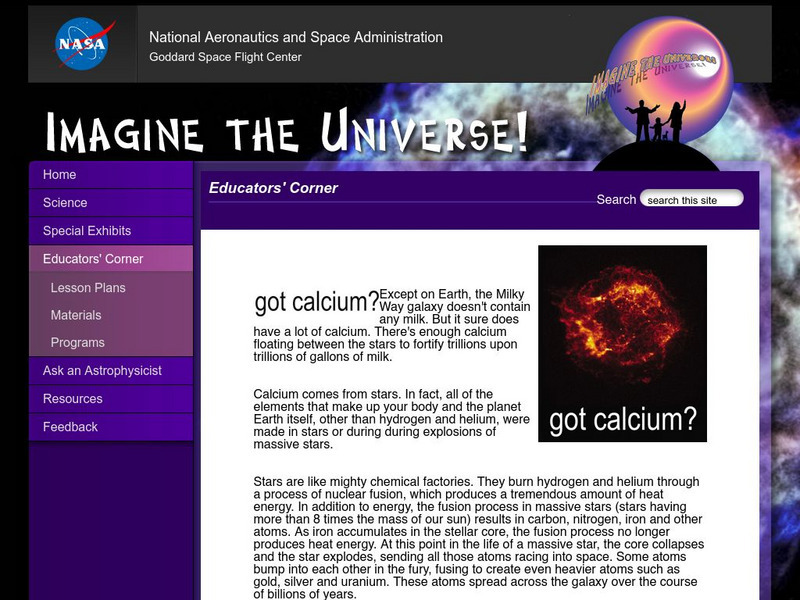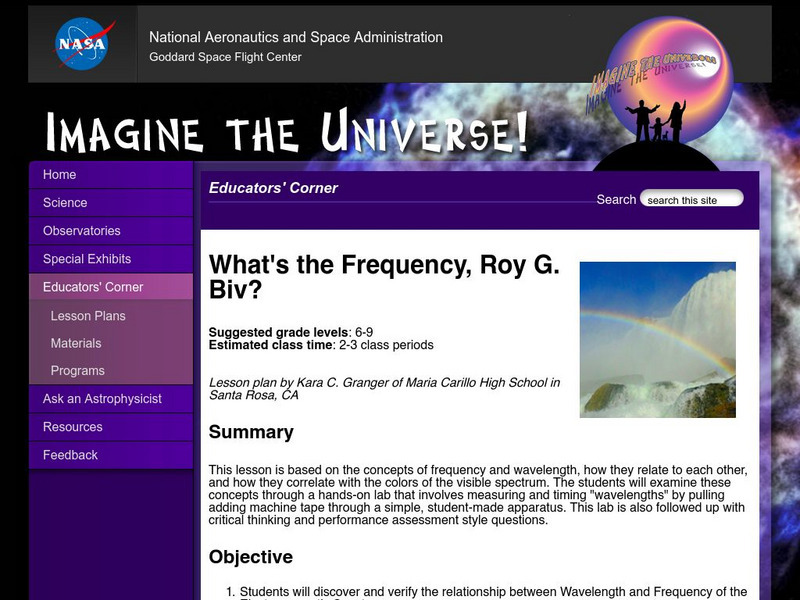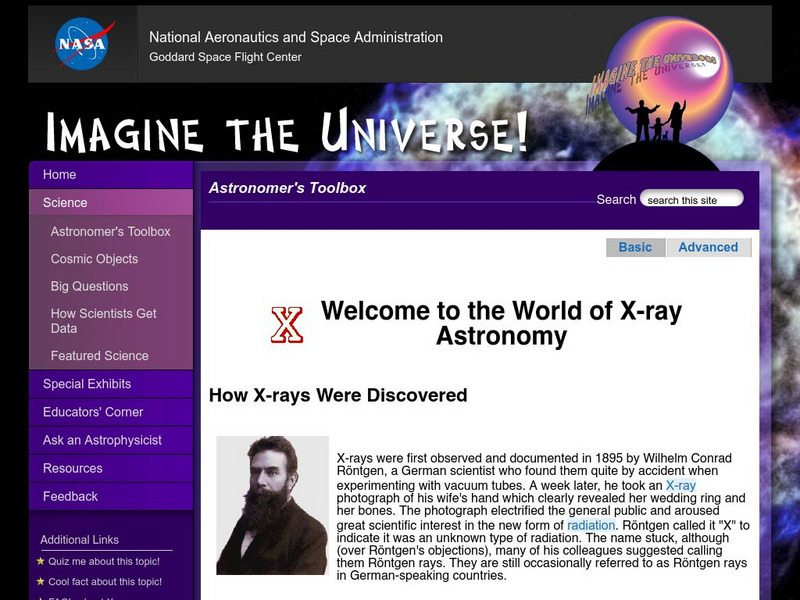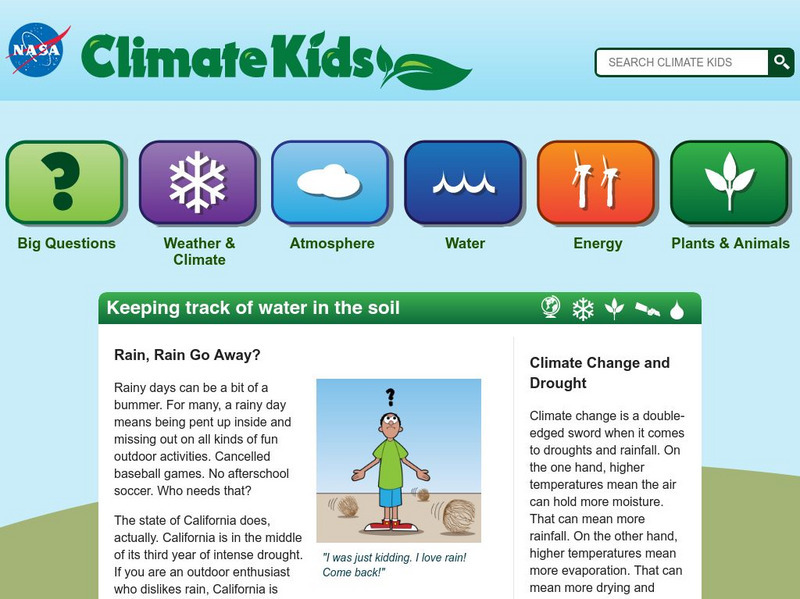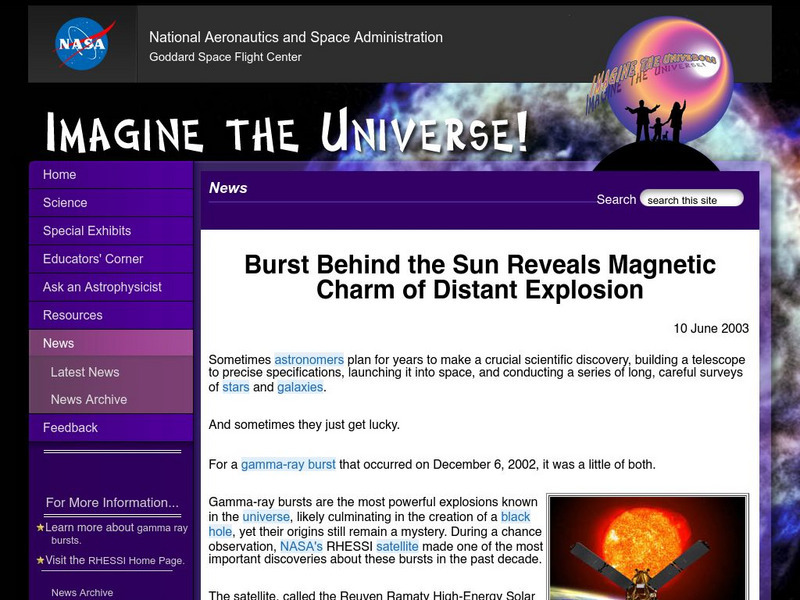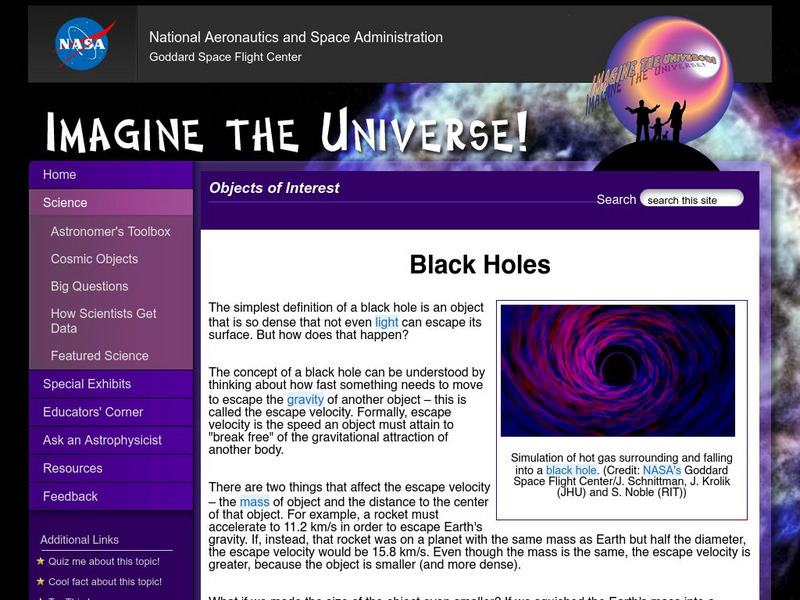NASA
Nasa: Sulfuric Acid Found on Europa
This NASA article discusses the sulfuric acid discovered on Europe, one of Jupiter's moons.
NASA
Nasa: Huge Springtime Storms Hit the Planet Uranus
Describes in detail the devastating storms that occur on Uranus.Also includes an .mpeg movie showing the rings of Uranus up close. (Mar. 29, 1999)
NASA
Nasa: The Ups and Downs of Ozone
Scientists look at the efforts to decrease ozone depletion in this news story from the year 2000. Maps and photos. Links to other ozone data-gathering sites. (June 26, 2000)
NASA
Nasa: Where Lightning Strikes
A written and audio story about where in the world lightning has most often struck and is most likely to strike. Discusses how NASA was able to obtain this information. (Dec. 5, 2001)
NASA
Nasa: A Cold New World
Quaoar, the most recent addition to our solar system, has displayed many planet-like characteristics but has yet to be named "the 10th planet." Learn more about the interesting find here. Many links to various sites on Quaoar and the...
NASA
Nasa: The Da Vinci Glow
In the year 1510, Leonardo Da Vinci had an interesting theory to explain earthshine. While his theory was partially incorrect he was well before his time in establishing certain facts. Learn about Davinci's speculations and the...
NASA
Nasa: A Meteoroid Hits the Moon
On May 2, 2006, a meteoroid hit the moon with a force equivalent to four tons of TNT. The event was captured on a 10-inch telescope equipped with a video camera. The video was then played in slow motion in order to be visible by the...
NASA
Nasa Science: The Brightest Supernova Ever Seen
Article explores the supernova of a star that is possibly "150 times more massive than our Sun." The primary observations of the explosion were accomplished through the Chandra X-ray Observatory. (May 7, 2007)
NASA
Nasa: Planets in a Bottle
In this simple lesson, students grow yeast to learn how the climates on each of the nine planets would affect life.
NASA
Nasa: Imagine the Universe: Got Calcium?
This site has an article on, "The Milky Way galaxy doesn't contain any milk, but it sure does have a lot of calcium. There's enough calcium floating between the stars to fortify trillions about trillions of stars."
NASA
Nasa: Imagine the Universe: Gamma Ray Bursts
What is a Gamma-ray Burst? Why do scientists study gamma-ray bursts? Find your answers to these questions as well as view additional resources on this topic.
NASA
Nasa: Imagine the Universe: What's the Frequency, Roy G. Biv
In this very detailed lesson plan from NASA, students investigate wavelength and frequency within the electromagnetic spectrum.
NASA
Nasa: Imagine the Universe: How Big Is That Star
This 2-5 day lesson plan investigates the diameter, radius and mass among several stars in order to understand stellar behavior, particularly in a binary system.
NASA
Nasa: Imagine the Universe: Welcome to the World of X Ray Astronomy
Site recounts how X-rays were discovered as well as who discovered them. Offers graphics, links to facts on this topic, a quiz, and teacher resources.
NASA
Climate Kids: 10 Interesting Things About Ecosystems
Discover 10 interesting things about ecosystems, including features of coral reefs, rainforests, deserts, grasslands, freshwater ecosystems, the tundra, the ocean floor, wetlands, boreal forests and big cities.
NASA
Nasa: Climate Kids: The Story of Fossil Fuels, Part 1: Coal
Discover the history of fossil fuels in chronological order, beginning in China and moving on to Bertha Benz and the creation of the first automobile. Learn about the rise in need for petroleum, and the pros and cons of fossil fuel...
NASA
Climate Kids: The Story of Fossil Fuels, Part 2: Oil
Learn about the history of oil and its consumption through the ages, beginning with Bertha Benz and the creation of the first automobile.
NASA
Climate Kids: Greenhouse Effect
Fun website for kids to learn about earth science. Students read about greenhouse gasses and the effect on the environment.
NASA
Climate Kids: Keeping Track of Water in the Soil
Website for kids with animated features and graphs teaches about climate and severity of drought in the U.S., particulary California.
NASA
Climate Kids: Climate Change Trivia
Fun website for kids on earth science presents trivia game in which students can test their knowledge on what they have learned about climate.
NASA
Nasa: Multimedia
NASA shows off images of space here as well as their interactive features: Find a blog, podcasts, interactive features and more. Download your favorite image onto your phone.
NASA
Nasa: Imagine the Universe: "Burst Behind the Sun"
Site provides the article, "Burst Behind the Sun Reveals Magnetic Charm of Distant Explosion," that details on a gamma-ray burst that occurred on December 6, 2002. Provides graphics and links to learn more about gamma-ray bursts.
NASA
Nasa: Imagine the Universe: Black Holes
Learn what black holes are and the myths that surround them.
NASA
Nasa: Imagine the Universe: Dark Matter
Site provides an introduction to dark matter and what it really is. Provides links to a quiz as well as facts about dark matter. Offers links to additional resources as well as related topics.







